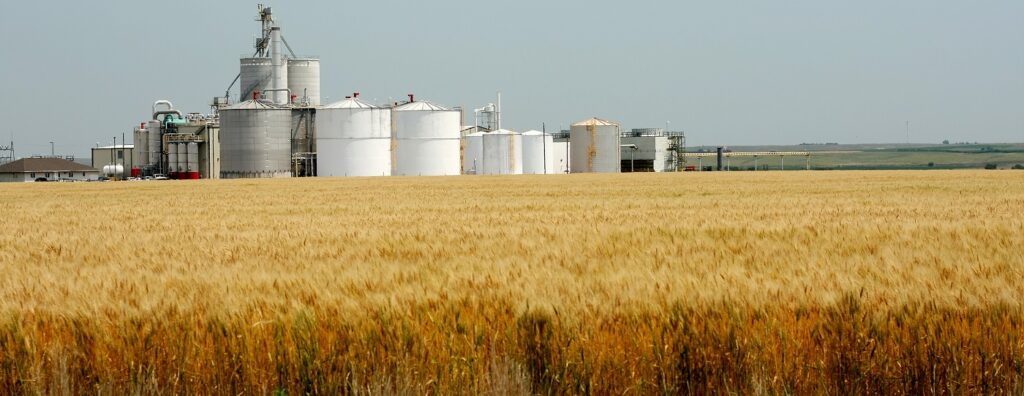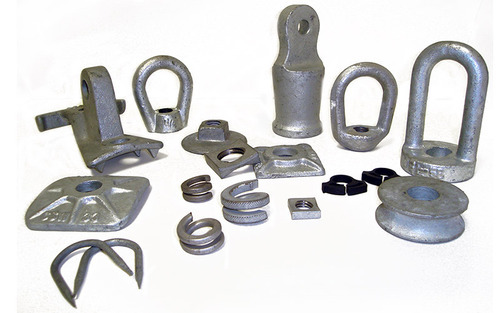
In recent years, biofuels have emerged as a component of South America’s energy strategy. This arises from the abundance of agricultural resources and the global shift towards renewable energy sources. For instance, Brazil has a high production of sugarcane, which is a feedstock for ethanol. In Argentina, soybean cultivation makes biodiesel a natural fit for the energy mix. The use of biofuels assists in reducing carbon emissions and reliance on fossil fuels. Ethanol from sugarcane has lower carbon emissions compared to corn ethanol. Brazilian ethanol can reduce greenhouse gas emissions by up to 90% compared to gasoline. This makes it one of the most sustainable biofuels on the market. Also, use of pole line hardware helps to ensure the efficiency and reliability of biofuel production in South America.
High quality pole line hardware ensures a stable and uninterrupted power supply to biofuel production facilities. This helps reduce downtime and optimize production processes of biofuels in South America. Moreover, biofuels provide an opportunity for countries to reduce dependence on imported fossil fuels and enhance energy security. South America has a strong agricultural sector that provides a natural foundation for biofuel feedstock production. This is through leveraging existing crops like sugarcane, soybeans, and palm oil. As the countries continue setting strict emissions targets, South America could become a supplier of biofuels. How do biofuels and pole line hardware contribute to biofuel production and efficiency in South America?
Pole line hardware plays a crucial role in the production of biofuels in South America
Pole line hardware includes components that support and maintain power distribution infrastructure. In biofuel production, pole line hardware supports the energy infrastructure needed to power biofuel production facilities. Common components used include poles, crossarms, insulators, clamps, and fasteners. These components help to ensure efficiency and optimize supply chains in South America. The following are the functions of pole line hardware in biofuel production facilities.

- Supporting energy distribution for biofuel production facilities – biofuel production is an energy-intensive process. Utility line hardware enables the efficient and reliable energy distribution to power mills, refineries, and processing plants. The hardware also helps in the integration of renewable energy sources like solar or wind into the main grid.
- Rural electrification in agricultural regions – it is crucial to use power lines to ensure the agricultural areas have access to reliable energy. Pole line hardware works in extending the grid to rural agricultural zones where biofuel feedstock grows. Quality pole line hardware reduces the risk of power disruptions. This helps improve the efficiency of biofuel production in South America.
- Optimizing transportation and distribution of biofuels – the support of utility line hardware ensure the transportation and distribution of biofuels. Pole line hardware ensures the pipelines receive the necessary electricity to operate.
- Enhancing sustainability and energy efficiency – utility line hardware ensures the energy transmitted is efficient to reduce power loss. High-grade pole line hardware reduces loss of energy. This is to help biofuel production remain more sustainable and cost-effective.
Reducing greenhouse gas emissions using biofuels in South America
Biofuels have materialized as a key component in reducing greenhouse gas emissions in South America. Replacing fossil fuels by biofuels helps mitigate the impact of carbon emissions under the Paris Agreement. With Brazil leading in ethanol production and Argentina in biodiesel, South America is well-positioned to continue its leadership in the renewable energy sector. Pole line hardware acts as a support to maintain the energy infrastructure for continued biofuel production. Biofuels are also essential in reducing their environmental impact. They also enhance their long-term sustainability. At TTF Power Systems, we are a one-stop-shop for utility pole hardware fittings, transmission line accessories and power line construction equipment. We provide our customers with the most extensive range of products in the industry, excellent value and knowledgeable service. Here’s how biofuels contribute to greenhouse gas reduction in South America.

- Lower carbon intensity – biofuels like ethanol and biodiesel have lower carbon footprints. This is due to the renewable nature of the feedstock used and the carbon cycle.
- Carbon sequestration during crop growth – the cultivation of biofuel feedstock helps sequester carbon. This offsets some of the emissions from biofuel production and use.
- Reduced dependence on fossil fuels – biofuels reduce the combustion of gasoline and diesel. These are the largest sources of carbon in the energy sector. The biofuel program in South America helps displace large volumes of fossil fuels.
- Energy efficiency and renewable power integration – biofuel production in South America has become energy efficient. This reduces the need for fossil fuel-based electricity, which cuts down on emissions.
- Supporting global climate goals – biofuels play a crucial role in meeting the region’s climate commitments. This is by reducing reliance on fossil fuels and promoting the use of low-carbon fuels.